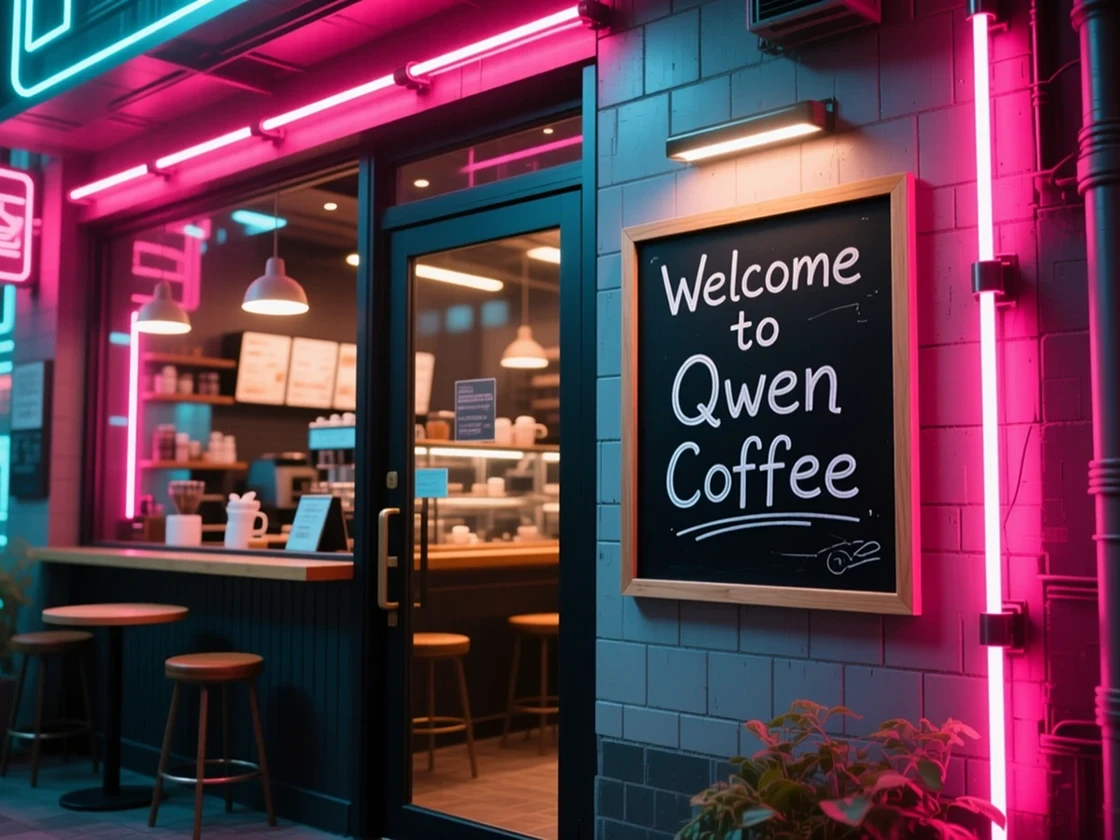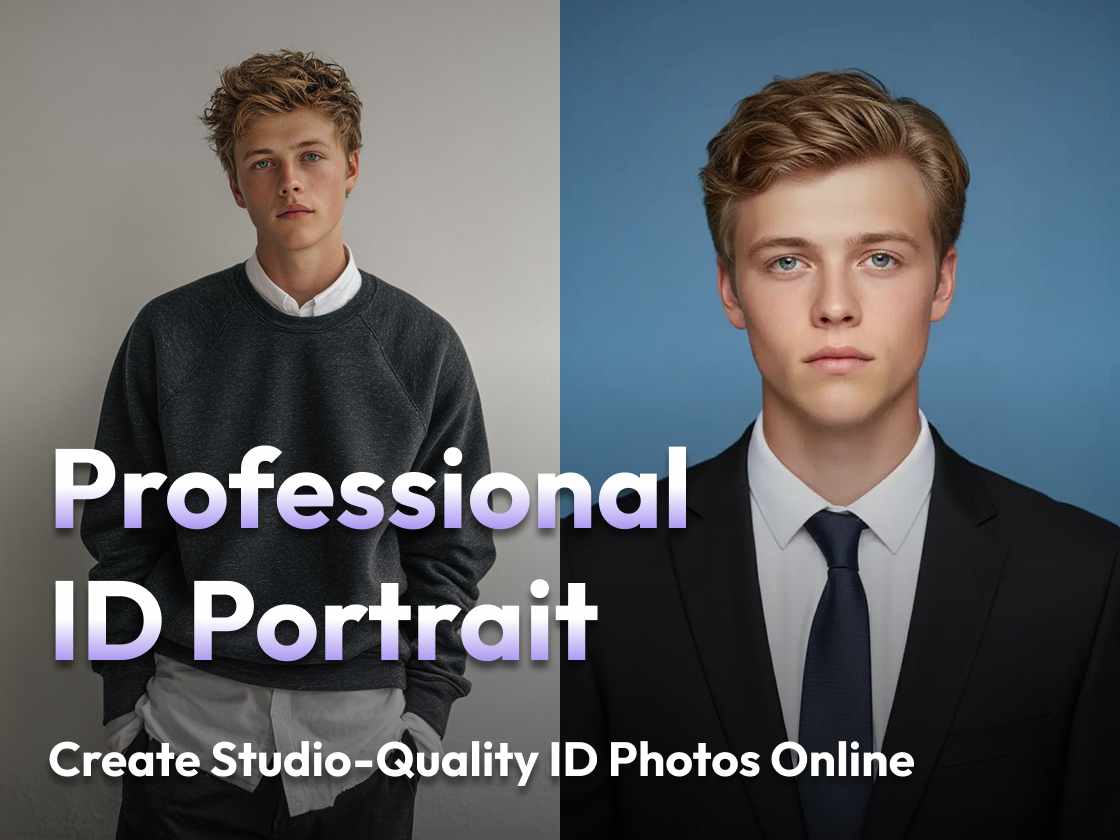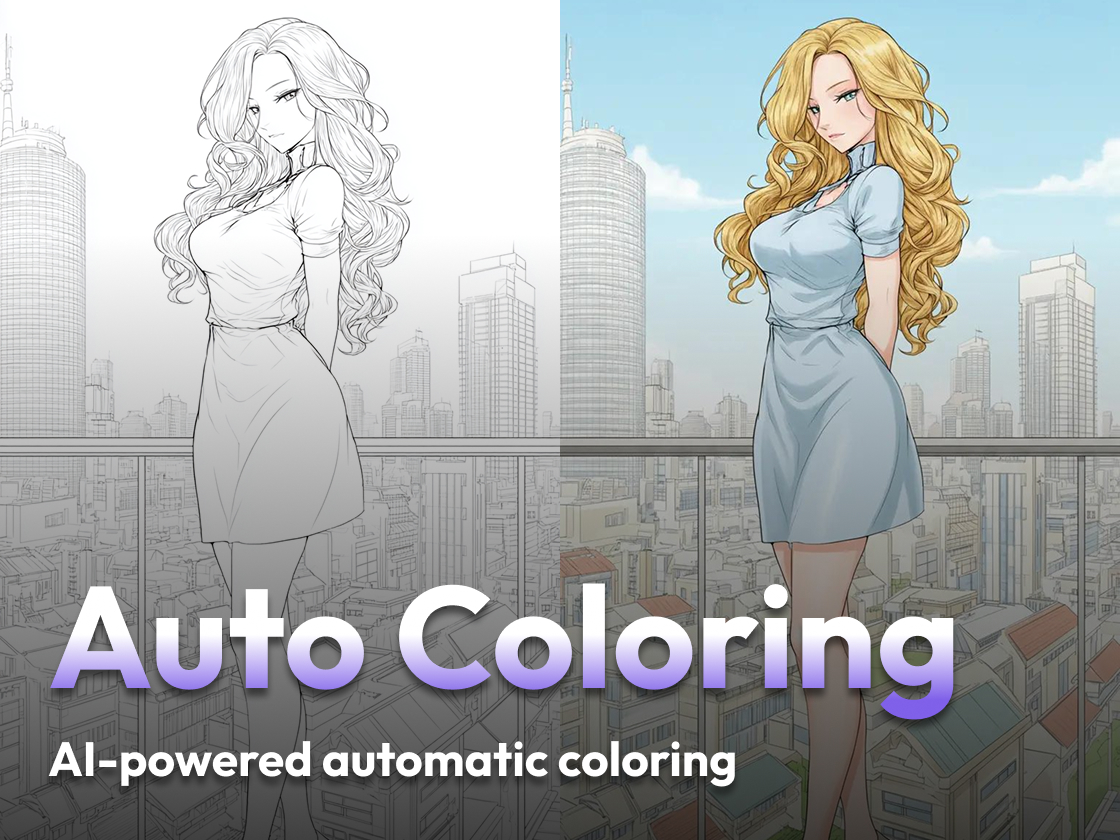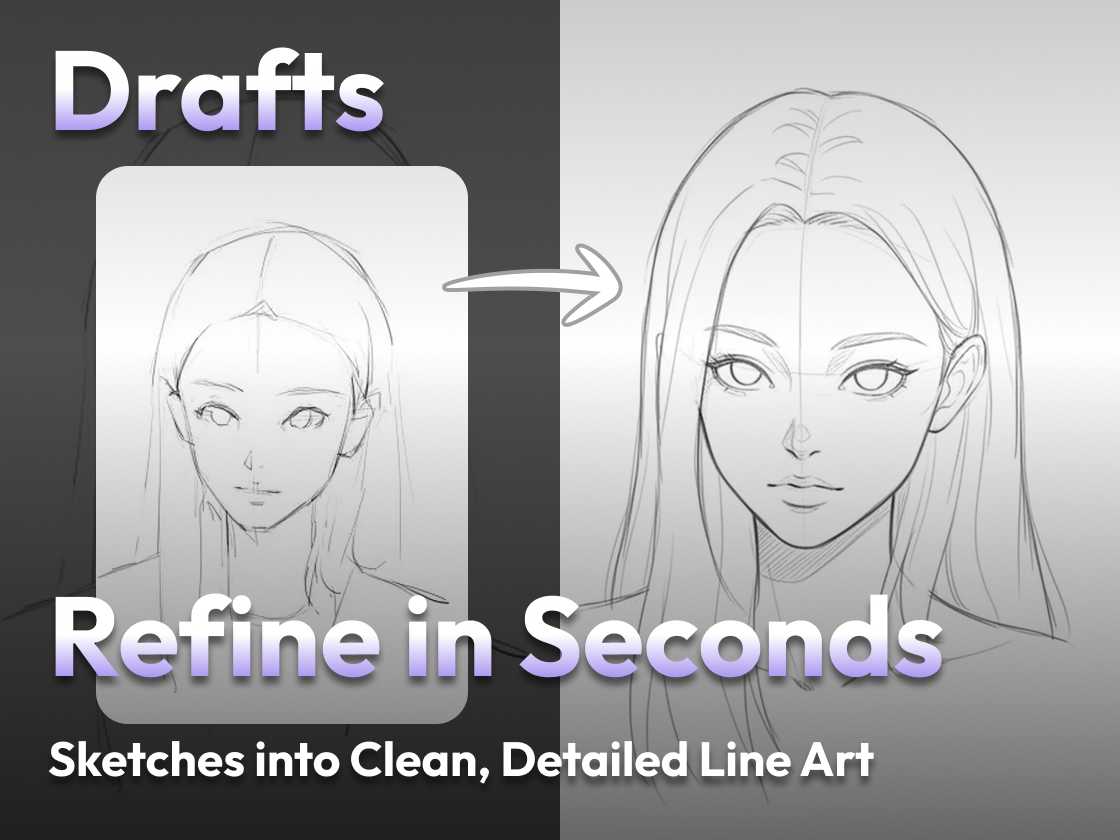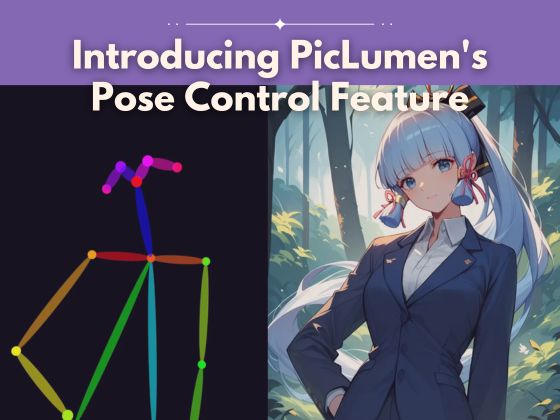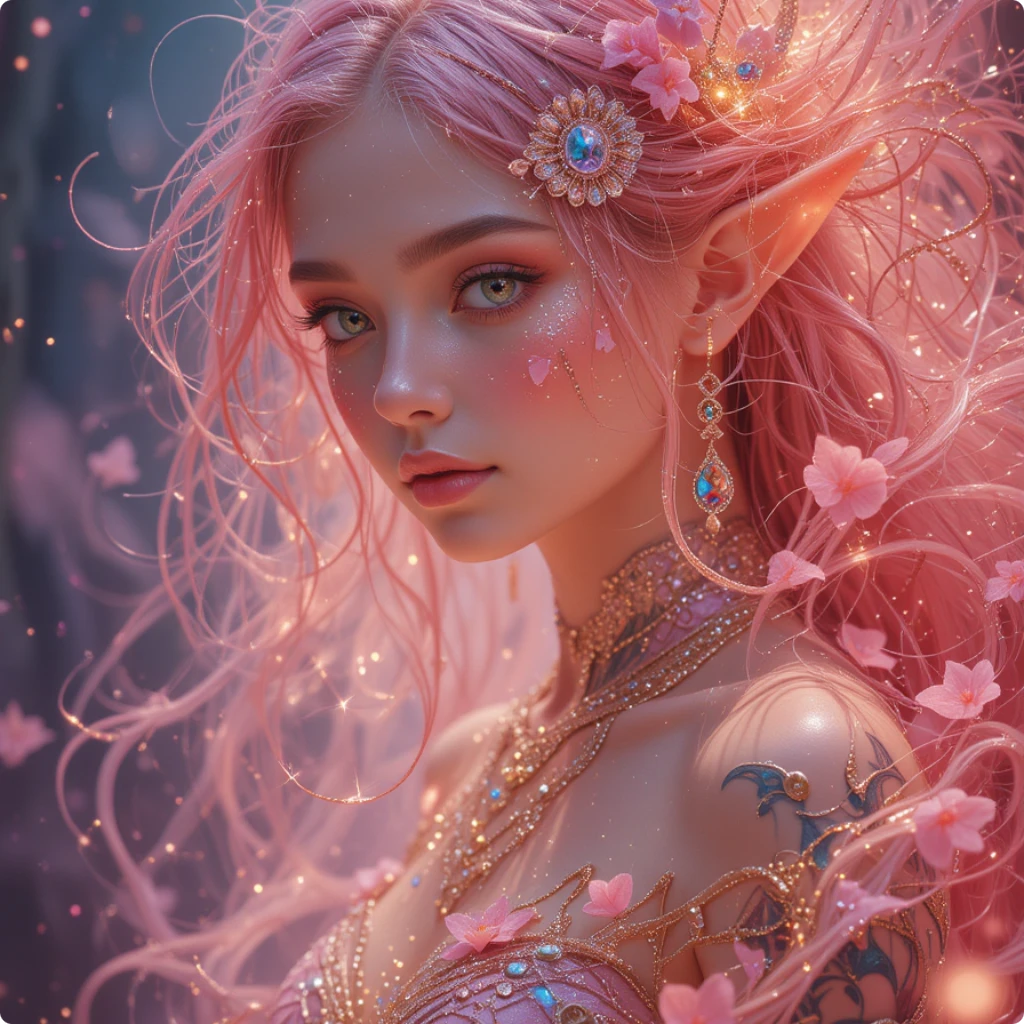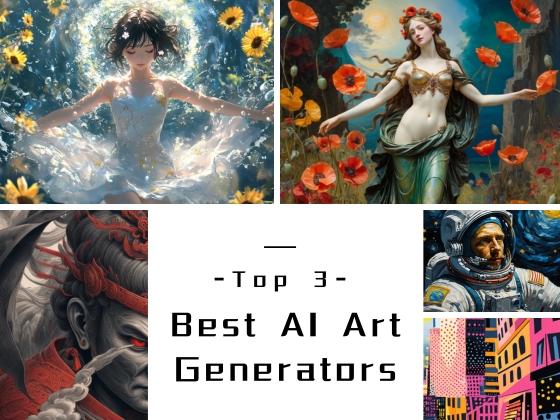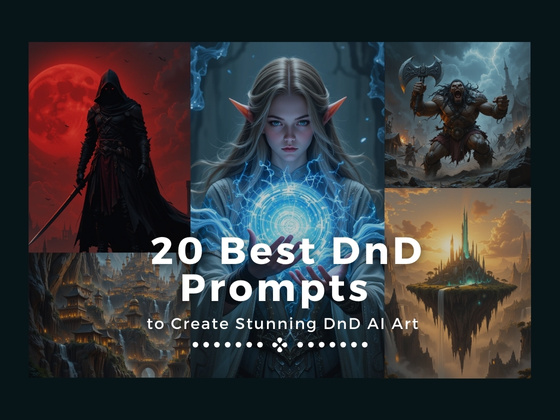Can AI-generated art be copyrighted? As of now, the answer is no. There have been many debates about this in recent years, leaving many creators and legal experts in search of clear guidelines.
This article will help you understand why AI-generated art doesn’t qualify for copyright protection. Meanwhile, you will learn some practical tips for protecting your AI art. Read along to find more details.
Can AI Art Be Copyrighted?
Again, no.
The U.S. Copyright Office prioritizes human authorship when granting copyright. The office has made it clear, with court support, that only works created by humans are eligible for copyright protection. AI-generated artworks are not eligible.
However, if a creator infuses AI-generated art with a substantial amount of their own creative input, the situation is different. These human-created portions can indeed be copyrighted. The challenge lies in defining what the U.S. Copyright Office deems as ‘significant creative work ‘.
For example, I need an illustration for my blog to show a flower cart on a country road. As someone who isn’t a skilled artist, I turn to PicLumen’s AI art generator to produce several images of flower carts. These flower carts are beautiful. But I can’t own the copyright because they are entirely AI-generated art without human modifications. I can use and share them on social media, but so can anyone else.

What if I change the way I use the AI art generator? I take an existing photo of a flower cart from the internet and use DALL·E 3 to generate a new image based on it. Can this new image be copyrighted? The answer remains no. The reason is the same—I didn’t add any human-created content.
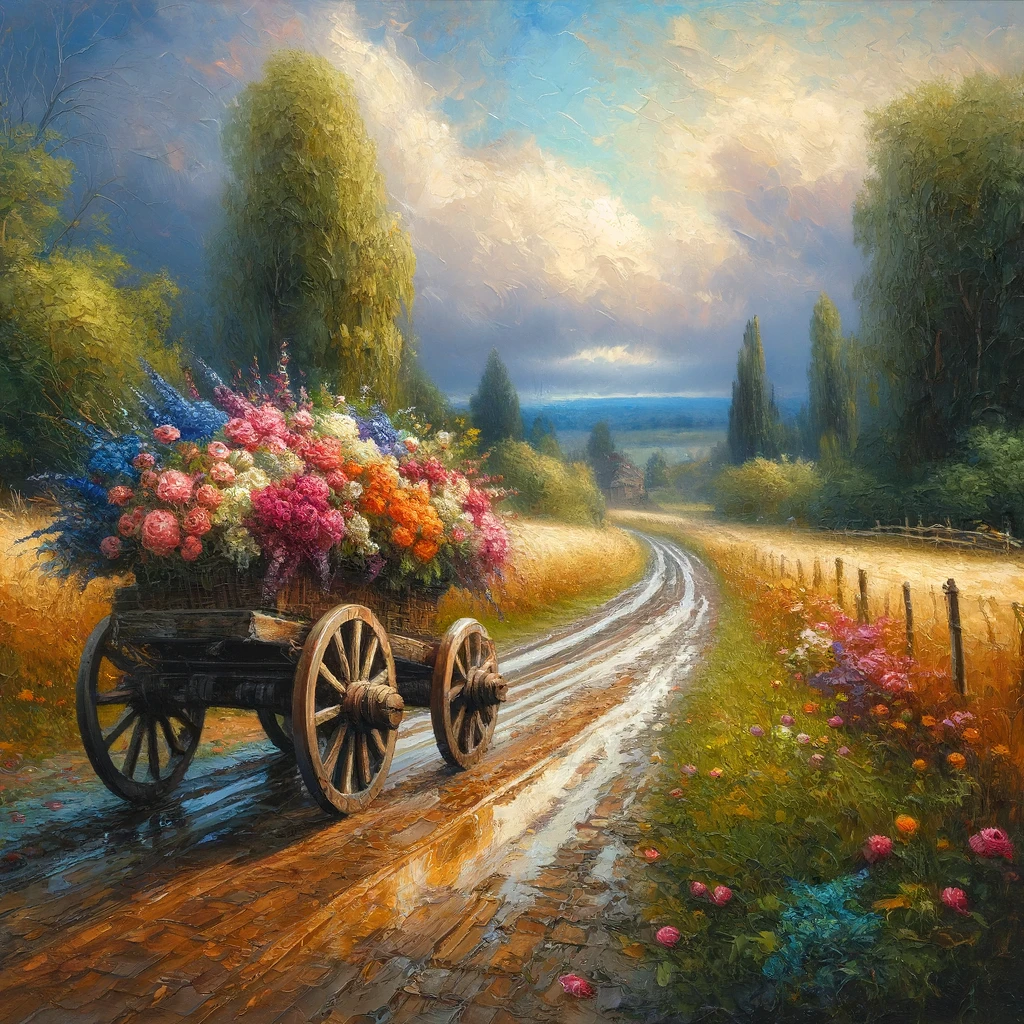
How about I use Photoshop and its AI tools to make slight adjustments? Like changing filters or adjusting lighting. Would these modifications enable the creator to claim copyright? The answer is uncertain. After all, we don’t know how the Copyright Office will view these changes.
What Do Major Institutions Say About AI Art Copyright?
U.S. Copyright Office
In January 2023, the U.S. Copyright Office released a draft policy on artificial intelligence and copyright law, addressing the complexities of AI-generated art. The key points of this draft include several important considerations:

● First, AI systems do not possess the human authorship required to claim copyright, which is crucial for AI art copyright.
● However, if a work created using AI reflects the creative choices of a human user, it may qualify for protection under AI art copyright.
● Additionally, the office noted that more analysis is needed on legal tests such as originality and fixation to determine the eligibility of AI Generated Art.
These points highlight the ongoing debate and the nuanced approach needed to address AI art copyright law.
Leading Tech Companies
In response to these complexities, major tech companies that create AI image and text generators have implemented policies to prevent copyright infringement and protect AI Generated Art:
● For instance, Google requires attribution for AI-generated content and restricts downloading high-resolution images to maintain ethical AI art usage.
● Similarly, Microsoft mandates that users cite the original sources and avoid using AI content for illegal purposes, ensuring responsible use of AI art.
● OpenAI also requires acknowledgment of source materials in AI outputs to safeguard AI-generated content.
These guidelines indicate that, despite the lack of legal clarity, tech leaders are proactively encouraging the lawful and ethical use of AI generators. This approach helps set a standard for responsible AI art usage.
Supreme Court
Turning to the judiciary, the Supreme Court has also weighed in on AI and intellectual property. In cases like Taylor v. Vidal, the plaintiff argued that AI could be interpreted as “human,” and thus AI-generated works could receive patent protection. However, the court extensively argued why inventors cannot include AI, focusing on defining a “person” in the AI era.
This case highlights the significant challenge of human authorship in AI art copyright issues. The ruling from the USPTO and the Federal Circuit in Taylor v. Vidal essentially stated that AI cannot be presumed to participate in the inventive process.
As it stands, the USPTO firmly believes that machines lack the capacity for conception. This perspective underscores the current legal stance that human involvement is crucial for intellectual property rights in AI art.
Do’s for Using AI Generated Art
As AI art generator technology rapidly advances, content creators should take proactive steps to ensure they use AI-generated art legally and ethically. Here are some essential do’s to keep in mind:
Educate Yourself on AI Art Copyright Law
With the explosive growth of AI Generated Art, it’s more important than ever to understand copyright law. Knowledge is power. And being informed helps ensure that creators use AI-generated images legally and ethically, protecting their creative endeavors.
Review the Terms of Service
Before diving into the world of AI-generated images, take a moment to carefully review the terms of service of the AI platforms you use. Understanding the usage rights is crucial, as many platforms grant licenses for custom art as long as copyright is retained. This step can save a lot of trouble down the road.
Consult Intellectual Property Lawyers
When in doubt, don’t hesitate to consult with an intellectual property lawyer. These professionals can provide invaluable guidance on navigating the complexities of AI art copyright, ensuring that you are always on the right side of the law.
Follow Platform Policies and Give Proper Attribution
Respect the rules. When using AI platforms, always adhere to their policies and give proper attribution. This not only shows respect for the platform’s guidelines but also ensures that your usage remains ethical.
Transform AI Images with Creative Elements
Be creative! If you’re planning to publish AI-generated images, consider significantly transforming them by adding your own creative elements. This can help the work qualify for fair use and adds a personal touch to your AI Generated Art, making it uniquely yours.
Carefully Evaluate Fair Use Factors
Take a step back and carefully evaluate the fair use factors. Consider the degree of transformation, the nature of the commercial use, and the impact on the platform’s market. This thoughtful assessment helps determine the legality of using AI art and protects your creative work.
Use AI Art for Experimental, Non-Commercial Purposes
To strengthen your fair use claims, try using AI art for experimental and non-commercial purposes. This approach not only reduces legal risks but also supports creative exploration, allowing you to push the boundaries of what’s possible with AI.
Attribute AI Platforms
Always give credit where it’s due. Properly attributing the AI platform you used to generate the art acknowledges the source and shows respect for the technology that made your creation possible.
Protect AI Art through Alternative Measures
In the face of copyright uncertainty, consider alternative protection measures:
● Submit provisional patent applications for your innovative AI systems.
● Seek trademarks for AI-generated art used in branding, adding an extra layer of protection.
● Use blockchain services to register your AI art, providing independent verification of ownership.
Combine Prudent Copyright Practices with Other Protections
While we await more clarity in the legal landscape, combining prudent copyright practices with other protection measures is the best strategy. This ensures that your AI-generated artworks are comprehensively safeguarded, giving you peace of mind as you create.
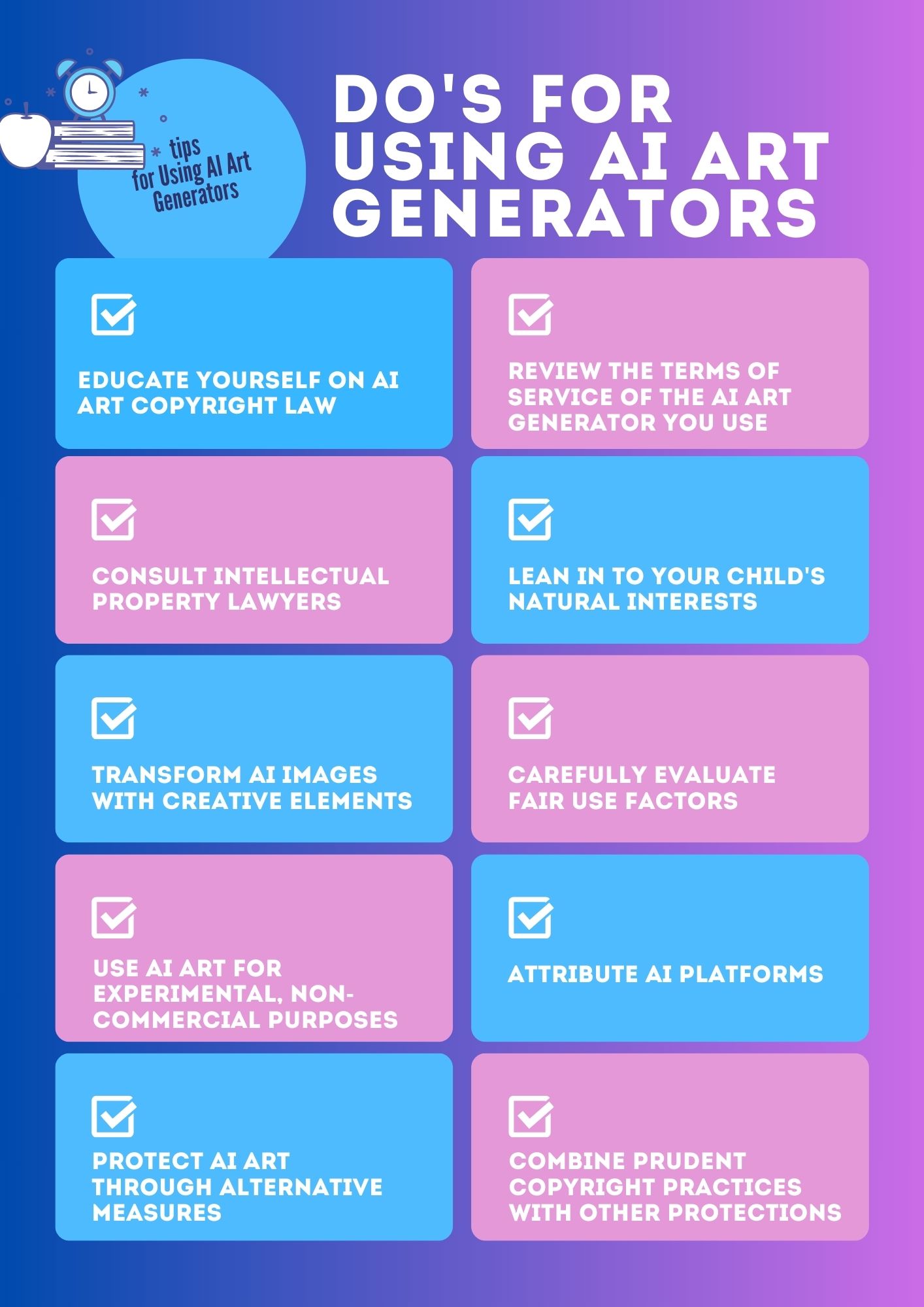
By following these guidelines, creators can better protect their AI-generated art. Additionally, these steps ensure legal and ethical use of AI art generators. But if you need a comprehensive protection, consulting with legal professionals is essential.
Watch Out These Don’ts When You Use AI Generated Art
Meanwhile, please read carefully about the don’ts when you use AI art generators.
Assuming AI-Generated Art is Automatically Protected
Don’t assume that AI-generated art is automatically eligible for copyright protection. Current laws typically do not recognize AI-generated works as eligible for copyright, making it crucial to understand AI art copyright regulations.
Ignoring the Terms of Service
Don’t use AI art without thoroughly understanding the AI art generator’s terms and conditions. Ignoring these can lead to unintentional violations and potential legal issues. So always review the rules to stay compliant with AI Generated Art usage guidelines.
Neglecting Human Creativity
Don’t overlook the importance of adding your own creative input. Purely AI-generated content lacks the human element required for copyright protection. Incorporate personal creativity to make your AI art unique and legally protectable.
Overlooking Licensing Opportunities
Don’t miss out on potential licensing opportunities. Properly licensing AI-generated art can provide additional protection and open up new avenues for monetization. Licensing ensures your AI art is both protected and profitable.

By avoiding these pitfalls, creators can use AI art generators more effectively and ethically. Stay informed, be creative, and respect the laws governing AI Generated Art.
